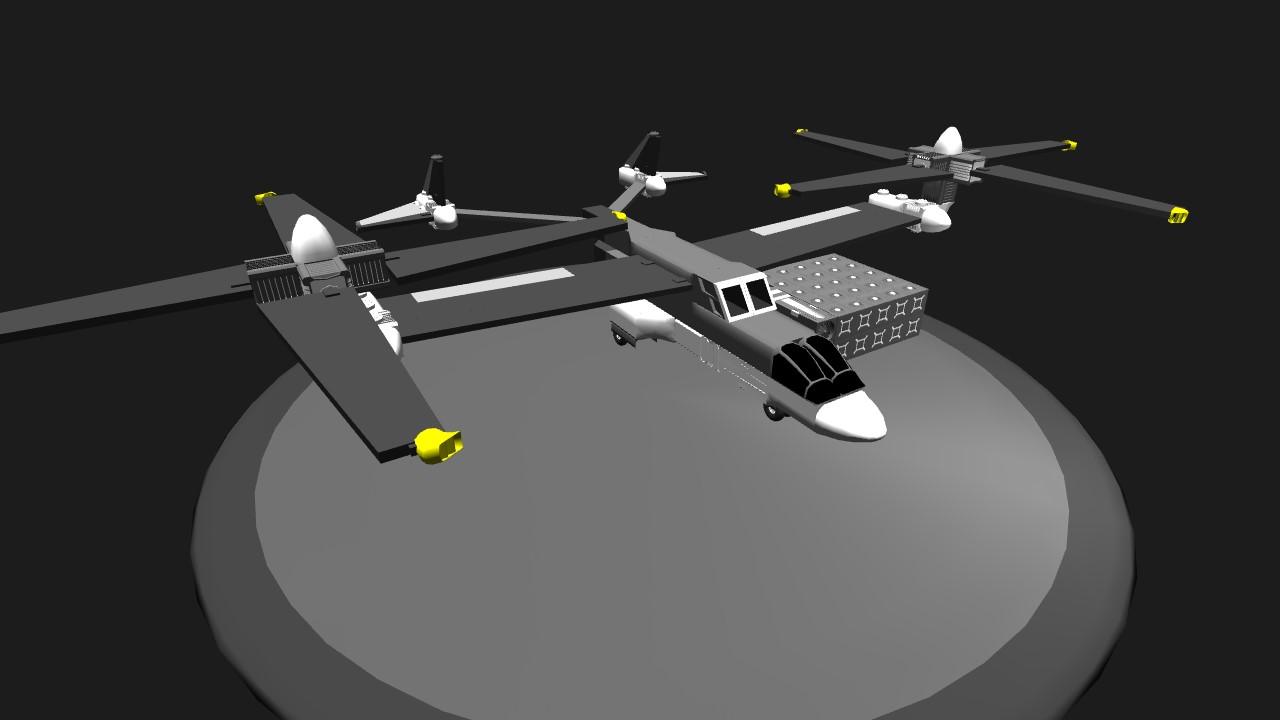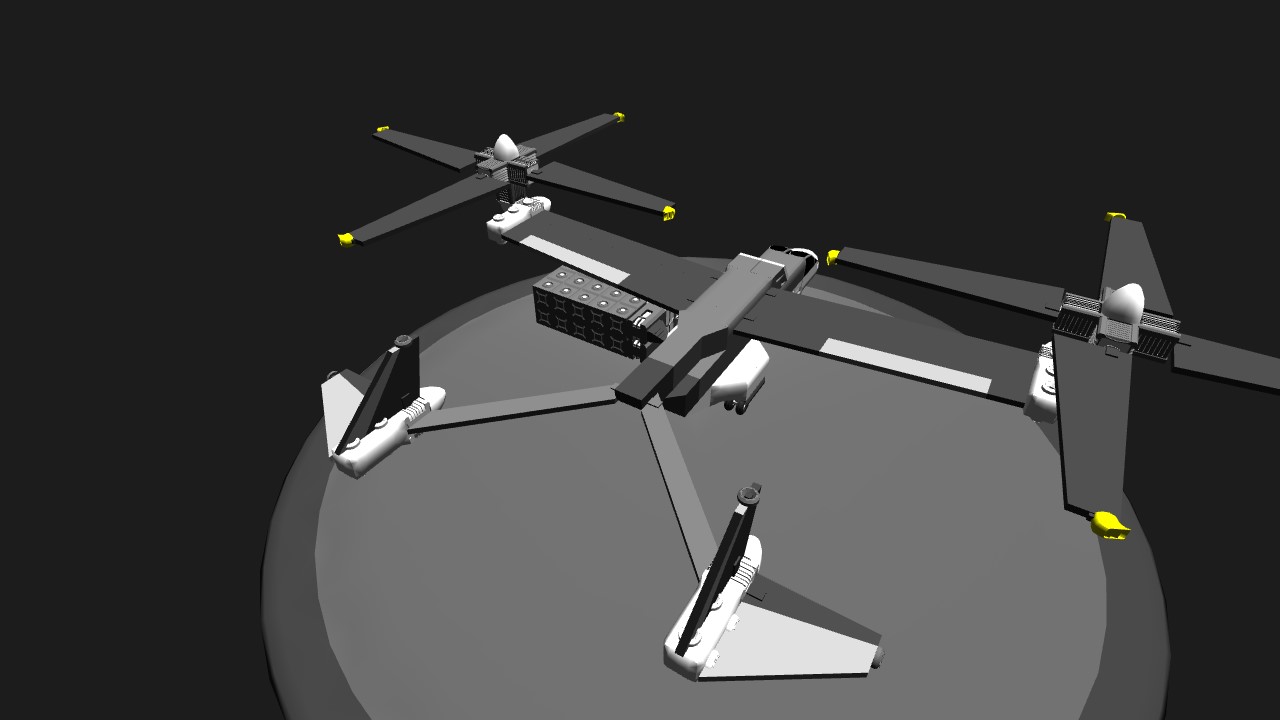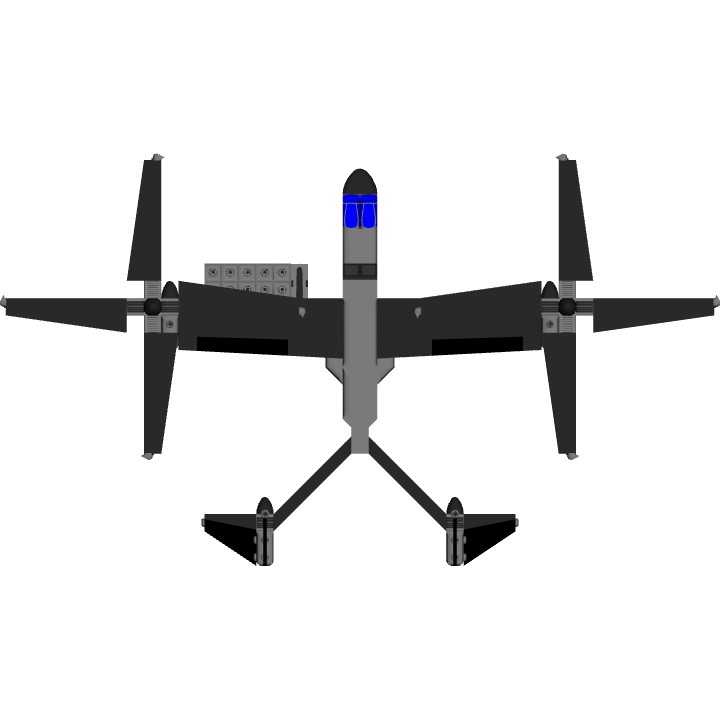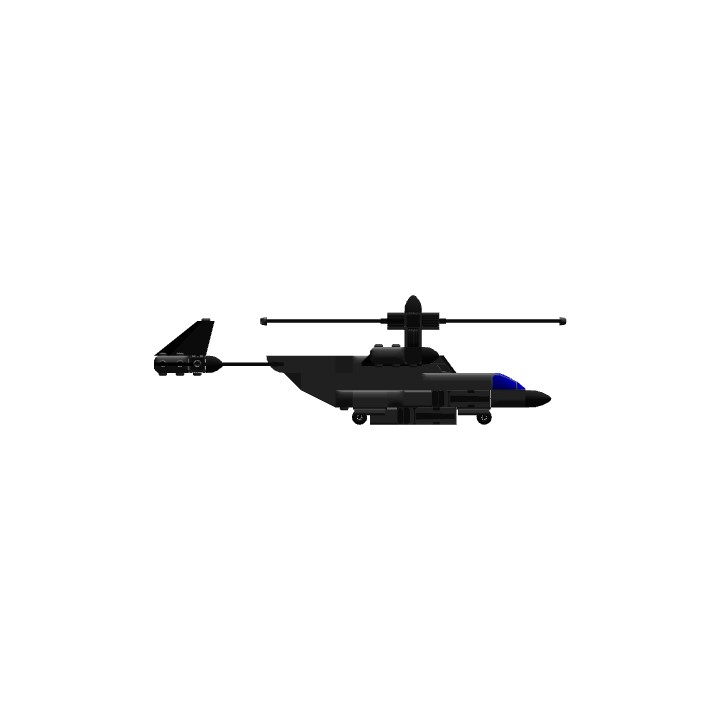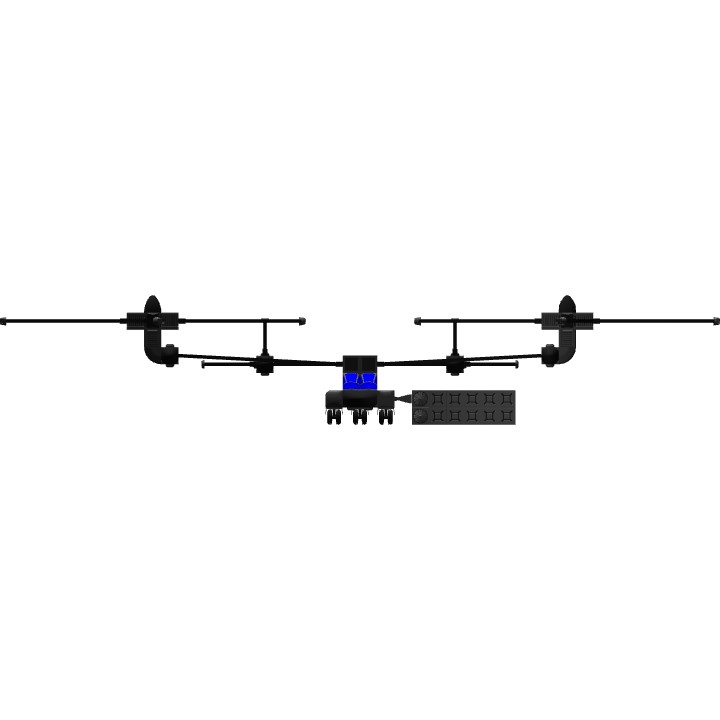Sly's HX125 is a multi-purpose transport with the flexibility of a helicopter and the speed of a plane.
PLEASE READ THE DESCRIPTION!!!
References are at the bottom.
You'll notice that the VTOL nozzles do not provide and thrust and only turn the rotors. Its only Rotors providing all the thrust, and lift here. I tested this on high physics and you may need to adjust your settings if it breaks. I'll try my best to explain how to fly this plane so please bare with me. Its easy once you understand.
When using the VTOL slider its best to move in the smallest increments possible. On the VTOL slider there are 2 notches above center. From the center notch up to the first notch is for vertical flight, like a helicopter. And from the first notch to the last is for forward flight, like a plane. When in forward flight mode the rotor acts as a variable pitch propeller and makes its best thrust between the first and last notch. Moving the VTOL slider all the way to the last notch means that the rotor is feathered and no longer produces thrust.
In addition to operating the rotor pitch the VTOL slider also rotates the nacelles from 90-0 degrees tilt or from helicopter to plane if you prefer. And on top of that its also needed for the trim function which is where it might be tricky to keep it all in order. For trim moving the VTOL slider above center pitches the nose down and below center pitches the nose up similarly to a real plane.
How to take-off vertical:
1. Throttle to 100% and activate group 1.
2. Raise the VTOL slider slightly until you leave the ground.
3. Raise landing gear.
How to transition to forward flight:
1. With the aircraft in stable and level hover activate group 2, group 1 should still be active. Expect the nose to pitch down and be ready to return to level.
2. Next start moving the VTOL slider up slowly. As speed builds the nose will try to pitch up, when it does move the slider up to make it pitch down.
3. When you get the slider set between the first and last notch deactivate group 1.
4. Deactivate the RNC thrusters as the are no longer required.
5. Now with only group 2 active move the slider to the last notch so that the nacelles are at 0 tilt. You can now deactivate group 2.
How to fly in forward flight:
1. With group 2 deactivated move the slider to somewhere between the first and last notch and reactivate group 1.
2. Notice how moving the VTOL slider changes the speed of the aircraft. In addition you may change the throttle setting from 100% to change your speed.
3. Top speed will be achieved once group 4 is activated for maximum power.
How to trim the Aircraft:
1. Once a desired speed is reached deactivate group 1 and move the slider back to center.
2. Activate group 3
3. Move the VTOL slider until the plane stays relatively level without constant input from the stick.
4. You may now deactivate group 3 and return the slider to it previous setting and reactivate group 1.
How to land Vertically:
1. Deactivate group 4 if active.
2. Move VTOL slider to the last notch above center.
3. Set throttle to 100%
4. Activate both group 1 and 2.
5. Activate RNC thrusters.
6. Quickly move the VTOL slider to center.
7. Quickly deactivate group 2.
8. Raise VTOL slider up slightly to maintain altitude
9. Adjust the throttle down from 100% to descend.
Short takeoffs and landing just use both groups 1 and 2 at the same time careful not to strike the rotors on the runway.
Reference:
Groups/Detach
1. Rotor pitch
2. Nacelle tilt
3. Trim tab
4. Maximum engine power
VTOL slider notches
|- Last from center
|- First from center
|- Center notch
|- Below center
|- Last notch below center.
Special thanks to Stingray for VTOL nozzles that don't turn with the rotors. @Stingray
Specifications
General Characteristics
- Successors 1 airplane(s)
- Created On Android
- Wingspan 68.4ft (20.8m)
- Length 39.1ft (11.9m)
- Height 12.3ft (3.8m)
- Empty Weight 18,517lbs (8,399kg)
- Loaded Weight 25,924lbs (11,759kg)
Performance
- Power/Weight Ratio 2.08
- Wing Loading 55.1lbs/ft2 (269.0kg/m2)
- Wing Area 470.5ft2 (43.7m2)
- Drag Points 9588
Parts
- Number of Parts 212
- Control Surfaces 6
- Performance Cost 793
- Log in to leave a comment
-
5,548 IntencerHelicopter challenge reward.10.7 years ago
-
6,881 DADOUGood work!10.7 years ago
-
Dev PhilipTarpleyNice Job!10.7 years ago

